Diagnostics
 Determination of blood groups using coliclones
Determination of blood groups using coliclones
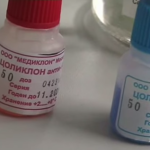 Zoliclones are monoclinal antibodies that are obtained from the blood of laboratory mice.
Zoliclones are monoclinal antibodies that are obtained from the blood of laboratory mice.
Everything is done through genetic engineering. The blood group, in our time, the ABO system, is established precisely with the help of these antibodies. Extremely large and high activity and avidity are demonstrated by coliclones, which suggests the time of arrival and the severity of the agglutination (gluing) reaction.
This technique is used only in a full-fledged laboratory.
Moreover, inside the cabinet, the temperature must be within the range starting from +15.0 and up to + 25.0 degrees Celsius. And the process of establishing a blood group can only occur with excellent lighting. Read completely "
 Determination of blood groups with standard sera
Determination of blood groups with standard sera
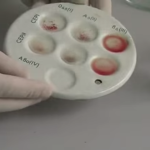 The determination of blood groups is based on the agglutination reaction, that is, sticking together.
The determination of blood groups is based on the agglutination reaction, that is, sticking together.
Lumps form when both agglutinogen A and agglutinin alfa, or agglutinogen B and agglutinin beta, or both are present in the sample. Agglutinogens are found in red blood cells, and agglutinins are components of blood plasma. Read completely "
 Urinalysis according to Addis-Kakovsky
Urinalysis according to Addis-Kakovsky
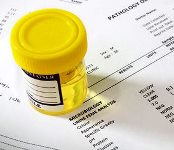
When diagnosing pathological processes in the kidneys, an Addis-Kakovsky urinalysis is performed, which makes it possible to determine the quantitative content of formed elements in the urine (erythrocytes, leukocytes, cylinders). This research method is currently used quite rarely, however, the nurse must know the purpose of the analysis and the algorithm for the collection procedure.
Otherwise, this analysis is called a urine test using the Kakovsky-Addis method, because. it was first proposed by our compatriot, doctor, scientist and teacher Anton Fomich Kakovsky in 1910. The urine collected from the patient for 8 hours during a night's sleep was studied. In 1925, the American scientist and physician Thomas Addis recommended that the Kakovsky method be improved. At the same time, urine was collected by patients per day.
 ECG technique
ECG technique
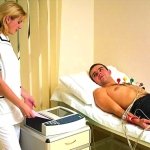
An important skill for a nurse is the correct technique for taking an ECG (electrocardiogram). Recall that electrocardiography is a technique for recording the electrical fields of the heart that arise in the course of its activity, as well as obtaining their graphic image on paper or a display. Electrocardiography is an informative and non-invasive method for studying the work of the heart - convenient and valuable for the patient and the attending physician.
 Methods of functional diagnostics
Methods of functional diagnostics
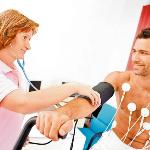
An objective assessment of the work of various organs and systems of the body can be made by methods of functional diagnostics - the study of functions with the help of technical instruments and apparatus. Functional diagnostics helps to establish the degree of disruption in the functioning of organs and systems. Functional abilities are examined in both adults and children.
Modern medicine cannot be imagined without this section. To work in the departments and cabinets of functional diagnostics, paramedical workers who have passed the relevant specialization and have successfully completed all the examination requirements are allowed.
There are many methods by which the physiological parameters of the human body are assessed. Let's consider the most common.
 Collection of urine according to Zimnitsky
Collection of urine according to Zimnitsky
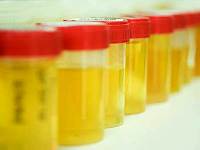
To study the excretory and concentration ability of the kidneys, a Zimnitsky test is performed. Such a diagnostic procedure is prescribed for patients with kidney pathology, as well as for diseases of the cardiovascular system (IHD, hypertension) and the endocrine system (diabetes mellitus). Proper collection of urine according to Zimnitsky ensures the reliability of the result of the study. The main task of the nurse is to educate the patient in the preparation and conduct of urine collection for analysis.
 Urinalysis according to Nechiporenko
Urinalysis according to Nechiporenko
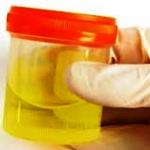
If it is necessary to quantify erythrocytes, leukocytes, cylinders (shaped elements) in the urine, a urine test according to Nechiporenko is performed. It is prescribed by a doctor when an increased number of leukocytes is detected in the general blood test , in the general analysis of urine - cylinders, and in other cases.
To obtain a reliable analysis result, the patient should be taught the preparation and direct collection of urine. The equipment for this procedure is a clean, dry jar or a plastic container with a hermetically sealed lid and a referral for research filled out in the prescribed form.
 X-ray methods of research
X-ray methods of research
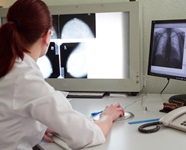
X-ray methods of examination of the body help to diagnose many diseases of internal organs and systems. A nurse, depending on the position and field of work, one way or another is faced with x-ray diagnostics.
The tasks of the nurse may be to ensure the preparation of the patient for x-ray examinations, help the doctor during the procedure, or directly conduct it (X-ray laboratory assistant).
 Mantoux test setting
Mantoux test setting
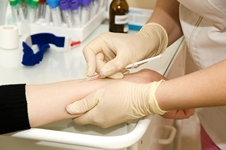
Tuberculin diagnostics, or Mantoux test, is carried out in order to select a contingent of patients for vaccination and revaccination of BCG, as well as to detect tuberculosis and infection with Mycobacterium tuberculosis.
Indications for Mantoux test
Appointment of a doctor in accordance with the vaccination schedule:
- from 1 to 7 years - 2 times a year (the interval between the Mantoux test is 6 months);
- from 7 years and older - 1 time per year (interval - 12 months).
- Read completely "
 Clinical blood test
Clinical blood test
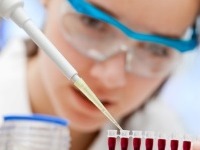
Most often in medical practice, a clinical blood test for diagnostic purposes. A general clinical blood test includes a qualitative and quantitative study of blood cells, which include:
- erythrocytes;
- platelets;
- leukocytes;
- amount of hemoglobin;
- erythrocyte sedimentation rate (ESR).
Changes in the cellular composition indicate the presence of pathological processes in the human body.
 Collection of urine for general analysis
Collection of urine for general analysis
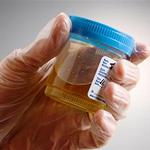
How urine is collected for general analysis and other studies, the nurse must know perfectly. Urine for general analysis is sent to study the functioning of the kidneys and other internal organs.
The analysis itself includes an assessment of the physicochemical characteristics of the studied biological fluid (urine), as well as a microscopic examination of the sediment.
The purpose of collecting urine for research is diagnostic, it consists in obtaining reliable results:
 Algorithm for taking blood from a vein
Algorithm for taking blood from a vein
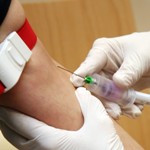
Consider the algorithm for taking blood from a vein for biochemical and serological studies.
On the eve of the study, the nurse warns the patient not to have breakfast, but to have dinner not late and not heavy. It should be explained that blood is taken on an empty stomach for analysis, because in this way the most reliable result is obtained.